If you’ve ever cruised on a boat that hums with quiet, consistent power, then you’ve already experienced the practical difference between 2-stroke engines and 4-stroke engines. However, when it comes to understanding why they feel so different and which one is better for your needs, things become interesting.
Today, we’re diving deep into the debate: 2-stroke engine vs. 4-stroke. If you’re into dirt bikes, boat motors, or 4-stroke motorcycles, you’re going to walk away with a better understanding of how these engine types work, where they shine, and where they fall short. Keep reading!
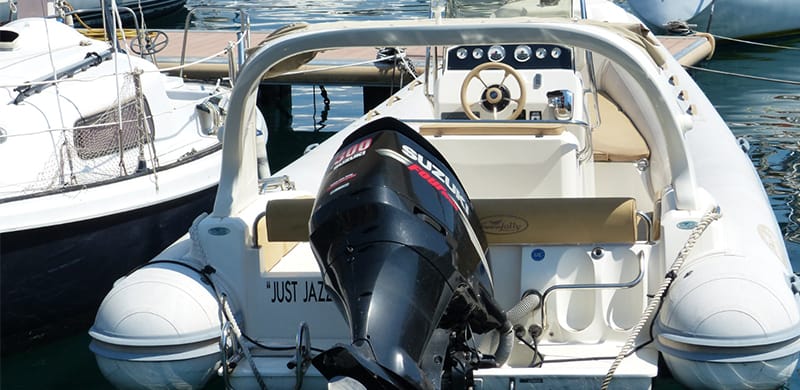
What Is a Stroke?
Let’s start with a quick refresher. In an internal combustion engine, a “stroke” refers to the movement of the piston within the cylinder. The piston moves up and down, and each complete movement is one “stroke.” The piston strokes are part of what is known as the power cycle, also referred to as the combustion cycle. In a full combustion cycle, there are four main strokes:
- Intake stroke: The intake valve opens and pulls in the fuel-air mixture.
- Compression stroke: The piston compresses the compressed fuel and air.
- Power stroke: The spark plug ignites the mixture, causing combustion and driving the piston down. This is where the cylinder gets its power.
- Exhaust stroke: The exhaust valve opens, allowing the exhaust gases to escape.
That’s four piston strokes, hence the term 4-stroke engine.
Difference Between 2-Stroke & 4-Stroke Engines
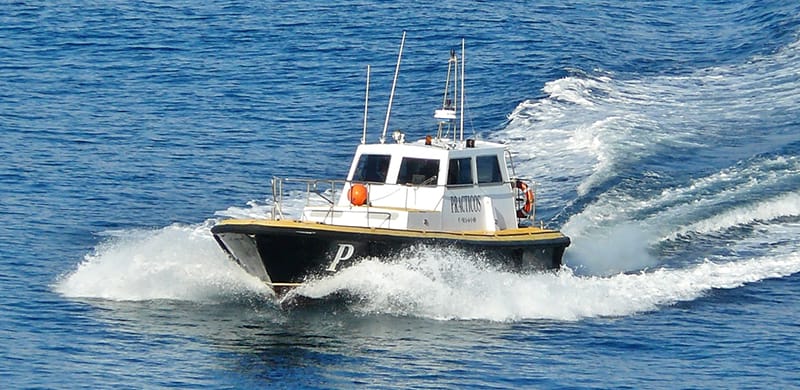
The difference between these engines can impact your boat performance. Simply put, the main difference between 2-stroke and 4-stroke engines is in the number of strokes it takes them to complete a full cycle.
- A 2-stroke engine completes a full cycle in just two strokes, meaning one crankshaft revolution.
- A 4 stroke engine completes it in four strokes, taking two revolutions of the crankshaft.
In other words, for every one revolution of the crankshaft in a 2-stroke, the engine gets one power stroke. A 4-stroke engine requires two revolutions for the same cycle.
How 2-Stroke & 4-Stroke Engines Run
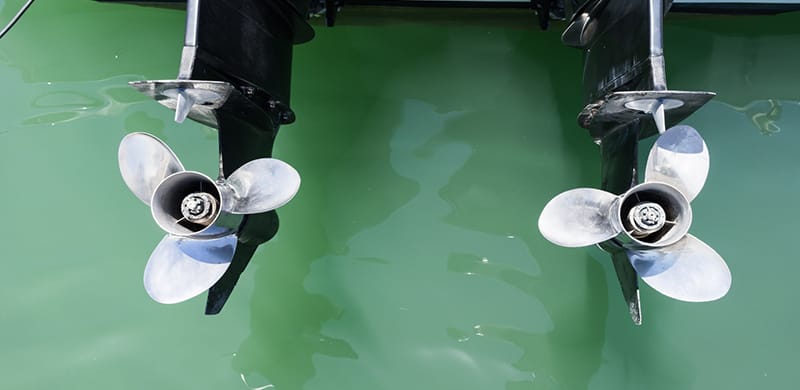
2-Stroke Engine
In a 2-stroke engine, processes occur quickly. The intake, compression, combustion, and exhaust all happen in just two movements of the piston:
1. Upstroke:
- The piston moves from bottom dead center (BDC) to top dead center (TDC).
- Compression: The fuel-air mixture is compressed in the combustion chamber.
- Intake (simultaneous): Fresh fuel-air mixture is drawn into the crankcase through the intake port (as the piston rises, it creates vacuum below)
2. Downstroke
- Ignition: Near TDC, the spark plug fires, igniting the compressed mixture.
- Power Stroke: Combustion forces the piston down (BDC), generating power.
- Exhaust & Transfer happens simultaneously.
There’s no dedicated intake stroke or exhaust stroke. Instead, ports in the cylinder wall allow gas to enter and exit the cylinder. That’s part of why 2-stroke engines tend to have fewer moving parts.
4-Stroke Engine
The 4-stroke engine spreads the work out over 4 strokes:
- Intake stroke: The intake valve opens, allowing air and fuel to be pulled in.
- Compression stroke: The piston compresses the mix.
- Power stroke: The spark plug fires, starting combustion.
- Exhaust stroke: The exhaust valve opens and gases are expelled.
It’s a cleaner, more measured approach. That extra time allows for less pollution, better fuel economy, and more consistent power.
Power Output
This is where the debate between 2-stroke and 4-stroke engines gets interesting. Because a 2-stroke fires once every revolution, it delivers more frequent power strokes, which is a significant power boost over a 4-stroke of equivalent displacement. That means that if you compare a 2-stroke engine and a 4-stroke engine of the same size, the 2-stroke usually offers more power, quicker acceleration, and a better power band.
But there’s a flip side to this: a 2-stroke also burns fuel faster and wears out more quickly. That’s the tradeoff. A 4-stroke typically offers more torque, especially at lower RPM. It’s smoother, more durable, and better suited for applications where both longevity and fuel efficiency are important.
Engine Design & Maintenance
The engine design plays a crucial role in maintenance and durability.
- 2-stroke engines have fewer moving parts, with no valves, just ports, and a simpler lubrication system (usually oil mixed directly with the fuel).
- 4 strokes have intake and exhaust valves, a separate oil system, and more components.
This makes 2-stroke engines lighter, simpler, and easier to repair. 4-stroke engines, on the other hand, are heavier but require less frequent maintenance and typically last longer.
So, if you’re riding dirt bikes on a tight track and want something snappy and lightweight, consider using a 2-stroke engine. If you’re powering a boat through open water and want something that won’t quit, choose a 4-stroke.
Environmental Impact: Which Is Greener?
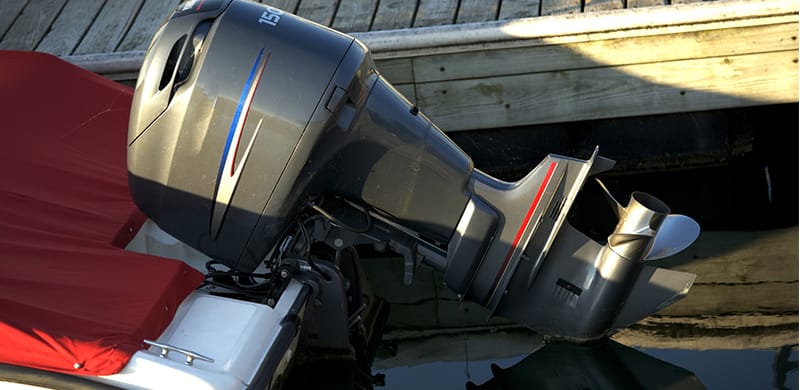
Let’s talk about emissions. Because 2-stroke engines mix oil directly with fuel and rely on port-based breathing, unburned fuel often exits with the exhaust gases. That emission results in more pollution and lower fuel efficiency. Although the modern DFI (Direct Fuel Injection) 2-strokes (e.g., some outboards) are much cleaner than traditional carbureted 2-strokes.
Still, 4-stroke engines, particularly those that meet EPA standards, are more environmentally friendly, featuring cleaner combustion and reduced waste. So if less pollution is on your radar (and it should be), the 4-stroke engine wins without question.
Common Applications of 2-Stroke & 4-Stroke Engines
2-stroke engines are commonly used in:
- Dirt bikes
- Small boat motors
- Chainsaws, weed whackers, and snowmobiles
- Older outboards and motocross bikes
4-stroke engines are typically found in:
- Modern boat motors and outboards
- 4-stroke motorcycles
- Lawn mowers
- Generators and scooters
- Most modern cars
The industry is gradually shifting toward 4-stroke engines for most applications, thanks to improved fuel economy, extended lifespan, and reduced pollution. However, the 2-stroke engine still has its loyalists, especially in sports where speed and weight are crucial.
The Bottom Line: Which One Should You Choose?
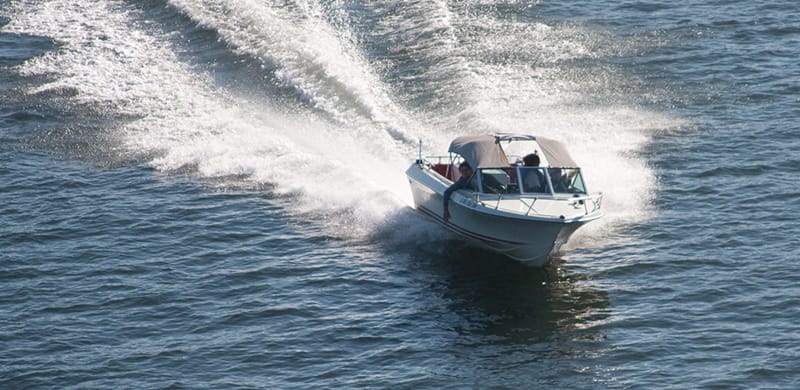
It all comes down to how you ride, where you ride, and what matters most to you.
- If you want quick bursts of power, a lightweight engine, and easy rebuilds, choose a 2-stroke engine.
- If you prefer less noise, fuel efficiency, and a longer engine life? Go for a 4-stroke engine.
In case you can’t decide, ask yourself these questions:
- Will I be racing or just cruising?
- Do I care more about speed or reliability?
- How much time am I willing to spend on maintenance?
- Is less pollution important to me?
- Do I want a more modern engine design or a classic feel?
Wrapping It All Up
The debate over 2-stroke engine vs 4-stroke isn’t going away anytime soon, and that’s a good thing. Each engine has its strengths. 2-stroke engines offer simplicity and punch; 4-stroke engines offer longevity and efficiency. It’s not so much about which one is “better,” but which one fits you better. Understanding the difference helps you make smarter decisions the next time you’re tuning your boat motor for an adventure.
Find the Best Propeller For Your Boat at Prop Depot
The right propeller makes all the difference in how your engine performs on the water. At Prop Depot, our professionals are expert in matching the perfect prop to your setup, no matter the motor type.
From expert propeller repairs and OEM replacements to a wide selection of top propeller brands like Mercury and Quicksilver, our Tennessee-based authorized dealer shop proudly serves boaters across the country.
Need help finding the right prop or looking to get yours repaired fast? Call (865) 673-8171 or ship in your prop today!
